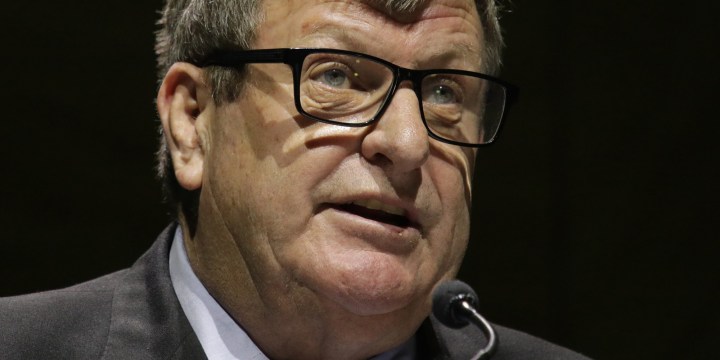COMPANIES
Harmony Gold’s annual earnings soar as Mponeng, world’s deepest mine, delivers

The sun may be setting on South Africa’s gold industry, but 3.8km below the surface, Harmony Gold is hitting pay dirt. The company’s full-year earnings soared by 60%, lifted by higher prices and a significant increase in grades at Mponeng, the world’s deepest mine, where Harmony may yet go further underground.
Harmony bought Mponeng, the world’s deepest mine which extracts gold as far down as 3.8km, from AngloGold Ashanti in early 2020 for $200-million.
It has not had any buyer’s remorse and the acquisition had already paid for itself by last year.
Harmony unveiled a 60% surge in full-year headline earnings on Wednesday to 800 cents per share, resulting in a final dividend of 75 cents per share. Mponeng played a starring role on this stage, with a staggering 16% increase in recovered grades, leading to a 22% rise in production to almost 240,000 ounces.
“We expected to go into the higher-grade parts of the mine two or three years after we bought it,” Harmony CEO Peter Steenkamp told Daily Maverick.
Overall, group earnings climbed by 14% to R47.5-billion, while overall, grades increased by 8%. Combined with a 15% spike in the average gold price received to $1,808 an ounce, the end result was a flow of cash to the company’s bottom line. This has bucked the trend among South African mining companies, notably in the PGM space, which have generally reported a significant fall in earnings this year.
Debt was slashed by more than R2-billion to leave net debt at just over R2.8-billion at the end of the period. The upshot is that the company has breathing room to pursue development projects including at Mponeng, which lies west of Johannesburg.
A feasibility study is being conducted at the mine to see if it can be extended 200m-250m deeper to 4km-plus-change. At such depths, this may not seem like much. But it could add 30 years to the life of the mine as it represents another mother lode of gold. After well over a century of industrial-scale mining, the Witwatersrand still holds dazzling riches.
But is it still economically viable at such depths? Mponeng is — rather amazingly — Harmony’s low-cost mine in South Africa, underscoring the importance of good grades. But to dig deeper will be a feat of technology, and that won’t come cheap.
“It would be quite a capital investment that we have to make and we have to make sure that we get the return … We haven’t approved this at all yet, we have to weigh it up against other projects,” Steenkamp said.
The feasibility study should be completed by the end of this year and if the numbers add up, the extension will be taken to the board for approval in the middle of next year.
One burning issue is whether mining can be done safely at even deeper depths.
“The number one thing is that we have to be able to do it safely,” Steenkamp said. “If you look at Mponeng at the moment, it’s a very safe mine. We are sitting on 2.3 million fatality-free shifts; for a deep-level gold mine, that is one of the best safety performances.”
Mponeng had no fatalities during the past financial year, a record for Harmony on the safety front. Its loss of life injury frequency rate — a key safety metric — improved to 0.06 per million hours worked in FY23 compared with 0.13 per million hours worked in FY22.
Still, over the course of the financial year, six of Harmony’s employees were killed on the job. Zero harm remains an elusive goal for it and the wider industry. But if it can mine safely 4km down, then the sun may not set soon on South Africa’s gold mining industry. In fact, the sky may be the limit. DM
















 Become an Insider
Become an Insider
Comments - Please login in order to comment.